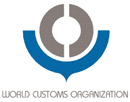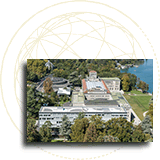WORK WITH OTHER INTERNATIONAL ORGANIZATIONS
The WTO and World Customs Organization
The WTO and WCO cooperate on a number of subject areas, including market access, Information Technology Agreement (ITA), customs valuation, rules of origin and trade facilitation.
See also:
> World
Customs Organization website

Introduction
In the area of market access, the WTO cooperates regularly with the World Customs Organization (WCO). This cooperation concerns the classification of goods. WTO staff regularly follow the work in the WCO on the Harmonized System classification nomenclature, both for the work of the Market Access Committee as well as for that of the Committee of Participants on the Expansion of Trade in Information Products. The Agreements on Customs Valuation and Rules of Origin contain provisions which call for the establishment of Technical Committees under the auspices of the WCO on these subjects. WTO staff maintain cooperative relations with these Technical Committees to examine questions with respect to these Agreements, as well as to assist in technical assistance activities. With respect to trade facilitation, since 2005, WCO officials have been participating in all WTO regional technical assistance activities. In addition, the WCO is assisting in the development of the needs assessment tool which is being designed and developed specifically for the trade facilitation negotiations of the Doha Development Agenda. WCO officials regularly attend, as observers, the meetings of the Negotiating Group on Trade Facilitation.
back to top
Cooperation on Technical Assistance
The vast majority of technical assistance activities had been in the area of customs valuation and trade facilitation. The current focus of activities (and budget) is on the trade facilitation negotiation issues. Future technical assistance cooperation might be necessary in the areas of rules or origin as more and more countries negotiate free trade agreements. Coordination of these activities is managed through contacts between staff of the respective Secretariats dealing with the relevant subject matter.
back to top
Schedules of Concessions on Goods
The Harmonized System (HS) nomenclature was developed by the WCO and entered into force on 1 January 1988 through a Convention. Although Article II of the GATT (Schedules of Concessions) does not establish a specific nomenclature to be used by Members in this respect, and despite the fact that other nomenclatures such as the BTN and CCCN were used in the past, the HS has become the de facto standard for Members in this respect. As of 31 March 2006, there were 78 WTO Members (counting the EC-25 as one) which were contracting parties to the HS Convention. In addition, practically all the remaining 47 WTO Members apply the HS in spite of not being contracting parties to it. The HS has also been used by WTO Members as a tool to define the products which are covered by certain agreements, the most important of which is probably Annex 1 of the Agreement on Agriculture. This Annex defines, in terms of Chapters, headings and subheadings of the 1992 version of the HS, which are the agricultural products. Therefore, changes in the HS have important legal implications for WTO Members, in particular with respect to their schedules.
The Harmonized System Committee of the WCO undertakes a periodic review of the HS to take account of changes in technology and patterns in international trade, and recommends amendments to the HS. The first set of such changes came into force on 1 January 1992 (HS92). A second, more substantial, set of amendments came into force on 1 January 1996 (HS96), and a third one on 1 January 2002 (HS2002). A fourth amendment entered into force on 1 January 2007 (HS2007).
Following the entry into force of the HS on 1 January 1988 (HS88), the pre-Uruguay Round schedules of those GATT Contracting Parties which were also contracting parties to the HS Convention were required to be transposed into the HS nomenclature. The “transposition” of these concessions is essential in order to ensure the transparency and predictability of the concessions, as it would otherwise be very difficult to determine whether the bindings are being respected. It is for this reason that the GATT Committee on Tariff Concessions adopted procedures for this purpose in 1983.
Special procedures were also used to introduce the subsequent HS amendments, the latest of which is the HS2007 decision contained in WT/L/673. The transposition of schedules has been an increasingly tricky issue to manage at the WTO, as it has proven very difficult to follow the pace of the HS amendments. It is hoped that the two last procedures which have been adopted (WT/L/605 and WT/L/673), where the WTO secretariat plays a more active role, would help to ease the problem and expedite the work.
back to top
Harmonization of Rules of Origin
The WCO Technical Committee on Rules of Origin (TCRO) was established in 1995 by the WTO Agreement on Rules of Origin (RO Agreement) and had, since then, carried out the main work of harmonizing non-preferential rules of origin. After establishing the overall framework of the harmonized rules of origin (HRO) and completing all necessary technical work, the TCRO in June 1999 transmitted almost 500 outstanding issues for discussion and decision in the WTO Committee on Rules of Origin (CRO). On the basis of these invaluable inputs from TCRO, the CRO has been working hard to complete the remaining work. To date almost 400 issues have been resolved (the number of outstanding issues: 117) and Members of the CRO are highly motivated not to miss again the deadline of this work, i.e. the end of 2007.
back to top
Customs Valuation
The WCO Technical Committee on Customs Valuation (TCCV) was established in 1980 by the Tokyo Round Agreement of Customs Valuation. Since then the TCCV and the GATT/WTO Committee on Customs Valuation (CCV) have maintained an excellent relationship as described above. The WCO Compendium of customs valuation contains advisory opinions, commentaries, explanatory notes and case studies adopted by the TCCV, which provide very useful guidelines for addressing various technical questions on customs valuation.
back to top
ITA and the WCO
The Second sentence of paragraph 5 of the Annex to the IT Agreement provides for:
“Participants agree on the common objective of achieving, where appropriate, a common classification for these products within existing HS nomenclature, giving consideration to interpretations and rulings of the Customs Co-operation Council (also known as the World Customs Organization or “WCO”). In any instance in which a divergence in classification remains, participants will consider whether a joint suggestion could be made to the WCO with regard to updating existing HS nomenclature or resolving divergence in interpretation of the HS nomenclature.”
The ITA Committee maintains very good relations with the WCO, in particular its Harmonized System Committee (HSC). In 2004, the ITA Committee requested the HS Committee to provide its opinion on the classification of “set top boxes”. Since then, the WCO Secretariat has periodically kept the WTO informed of the deliberations on “set top boxes” at the HS Committee.
The HS amendments have also affected the product coverage of the ITA. A number of product codes listed in the attachments to the ITA are affected by HS amendments in 2002 (HS2002) and two thirds of codes are affected by the amendments that entered into force on 1 January 2007 (HS2007). The ITA committee has already started to discuss how to update the products list into the new nomenclatures, but it proved very difficult to reach an agreement due to the complexity of HS amendments and the remaining classification problems under the old nomenclature (HS1996). Although these amendments are helpful, they do not necessarily solve the existing problems in the ITA, and implementing some of these changes may prove challenging to maintain the original HS96 based commitments.
back to top
Trade Facilitation
Cooperation in the area of Trade Facilitation is particularly close and productive. Regular participation in key meetings, substantive contributions to the WTO negotiations and extensive collaboration in the technical assistance field evidence the constructive relationship between the two organizations and their complementary strengths.
Already an observer in preliminary WTO work in preparation for the negotiations, the World Customs Organization (WCO) became a regular participant in the Negotiating Group on Trade Facilitation as soon as it commenced its operations. Contributions range from technical advice and the preparation of supporting tools to extensive engagement in technical assistance activities all over the world.
The vast technical expertise of the WCO, which is home to a number of key instruments in the customs domain, makes it an ideal partner for ongoing WTO initiatives in this field.
Common activities are likely to increase further with both organizations embarking on an extensive needs and cost assessment program, together with the World Bank and other international partners in the field. The objective is to provide governments with information on their requirements to implement the possible outcome of the Trade Facilitation negotiations in terms of concrete measures to put into place. An underlying tool for the analysis is in its last stage of preparation and currently being tested on the ground. The final version will be used for a series of national and regional assessments in the months to come.
Cooperation also takes the form of joint activities under the Global Facilitation Partnership (GFP). Designed to increase coherence and enhance coordination, the GFP provides a forum for developing joint responses to the many challenges in the Trade Facilitation field.
